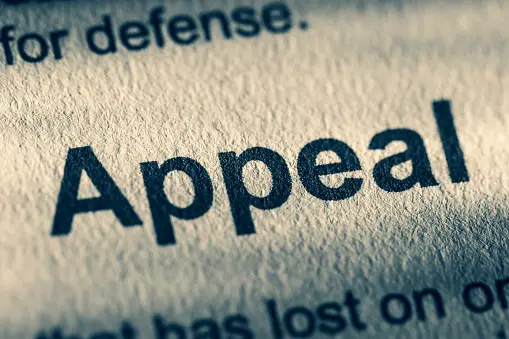Have you ever found yourself navigating through the legal labyrinth and stumbled upon a “Notice of Submission”? Fear not, for this seemingly mundane document carries profound significance in the legal tapestry. Join me on a journey as we unravel the mysteries behind the Notice of Submission and explore its crucial role in the intricate dance of legal proceedings. Let’s embark on a quest to demystify this often overlooked yet pivotal piece of paperwork.
What Is a Notice Of Submission?
Picture the legal landscape—a battleground of ideas where attorneys carefully craft arguments, plan their moves, and gather a trove of evidence to fortify their positions. As the legal chess game unfolds, there comes a strategic moment when both sides decide it’s time to lay down their weapons, metaphorically speaking. Enter the Notice of Submission. This document becomes the formal announcement that all relevant documents, pleadings, and evidence have been carefully presented, and the case now stands ready for the court’s scrutiny and deliberation.
However, beneath the surface of this seemingly routine notice lies a complex interplay of legal dynamics. Far from being a mere bureaucratic formality, the Notice of Submission propels the wheels of justice. Upon getting this notice, judges assume the role of legal referees, immersing themselves in the facts of the case. This is the point where legal arguments are studied, evidence is looked at, and the scales of justice are delicately balanced.

The Notice of Submission, therefore, serves as the hinge upon which the doors of justice swing open. It is not a perfunctory announcement but a momentous occasion where the legal narrative reaches its zenith. Attorneys brace themselves for the upcoming decision, clients await the outcomes, and the justice system comes alive with the gravity of its responsibility.
This seemingly mundane document becomes a harbinger of resolution—a culmination of collective efforts, strategic maneuvers, and legal diligence. It shrinks the complexities of a legal matter into a formal announcement, signaling a pause in the legal saga and paving the way for the pronouncement that will shape the course of justice.
Importance Of a Notice Of Submission
In the vast tapestry of legal proceedings, the Notice of Submission emerges as a silent orchestrator, playing a multifaceted and indispensable role in an array of scenarios. Its significance extends far beyond the seemingly routine act of signaling the conclusion of a case.
1. Court Filings:
Imagine the hushed expectation of a courtroom, where legal strategies are honed and arguments properly crafted. The Notice of Submission takes center stage in this judicial theater. It serves as the herald of a case’s readiness for adjudication. This document goes beyond a mere formality. It functions as a declarative statement that all necessary elements—arguments, evidence, and legal groundwork—are present and precise.
2. Contractual Obligations:
In the intricate dance of business agreements, the Notice of Submission can signify the conclusion of a contractual saga. As parties fulfill their obligations under the terms of an agreement, this document transforms into the formal cue that the stage is set for resolution. It encapsulates the end of contractual requirements and triggers the transition from negotiations to the formal legal realm.
3. Administrative Proceedings:
Within the realm of government agencies and regulatory bodies, the Notice of Submission assumes a critical role in administrative hearings. Acting as a procedural beacon, it signals compliance with regulatory requirements and sets the stage for a systematic and orderly resolution of disputes. Its submission often marks the beginning of a process that goes through regulatory intricacies, providing a fair and just outcome.
4. Appeals Process:

In the realm of appellate advocacy, the Notice of Submission serves as the inaugural note in the symphony of legal appeals. Challenging a lower court’s decision requires legal acumen and procedural adherence. This document formally initiates the appellate journey. In this context, it invites the higher court to scrutinize, evaluate, and potentially rectify the lower court’s findings.
Beyond its procedural role, the importance of the Notice of Submission lies in its ability to streamline and enhance the efficiency of legal processes. By announcing readiness, it becomes a linchpin in the intricate machinery of justice, ensuring that legal proceedings unfold with precision and adherence to due process. It stands as a testament to the structured and orderly progression of cases. It also provides a foundation upon which legal practitioners can navigate the complexities of the legal landscape.
Understanding the Importance of Notice of Submission in Legal Documents
At its core, the Notice of Submission serves as the ceremonial herald. It announces that a particular document or case is now poised for final scrutiny. Imagine it as the prologue to a legal narrative, setting the stage for the crescendo of analysis and decision-making that is about to unfold. Whether it’s a carefully drafted contract, an influential legal brief, or a meticulously researched case, the Notice of Submission stands as the gateway to the next chapter in the legal saga.
Functioning as more than a mere form of communication, this notice is a beacon of transparency in legal proceedings. By formally alerting all relevant parties involved, it ensures that honesty is obtained. Picture the legal arena as a stage and the Notice of Submission as the spotlight, lighting the coming legal performance for all stakeholders.

Yet, the Notice of Submission is not merely a symbolic gesture. It is also a temporal marker that holds sway over the legal process’s intricate timelines and deadlines. Legal proceedings often operate within stringent timeframes. This document acts as a temporal milestone, showing that the sands of time are trickling down. The urgency it imparts is tangible, urging all involved parties to hone their focus and give their responses. In the chessboard analogy of legal proceedings, the Notice of Submission signifies a critical move, announcing, “Checkmate is imminent.”
The influence of this notice extends beyond its role in temporal dynamics; it shapes the very trajectory of legal discourse. Functioning as a call to arms, it rallies attorneys, judges, and all relevant stakeholders to focus their brains on the matter. The intensity of observance and diligence it demands is outstanding.
Conclusion
The Notice of Submission is more than a procedural prelude in the grand tapestry of legal procedures. It is the harbinger of legal denouements, a document that bridges anticipation with resolution. Understanding its comprehensive importance is not merely an academic exercise; it is a key to unlocking the dynamics of legal proceedings and appreciating the meticulous choreography that precedes legal decisions. As we navigate the complex currents of legal documentation, acknowledging the profound significance of the Notice of Submission becomes paramount—an acknowledgment that resonates in courtrooms, law offices, and the very essence of legal practice itself.
How have advocacy groups contributed to tax protesting in Texas?
Various advocacy groups within Texas focus on tax-related issues, playing a crucial role in shaping the narrative around tax protesting. These organizations lobby for legislative changes, raise public awareness about specific tax concerns, and provide support and resources to individuals navigating the complexities of tax dissent.
What impact can tax protests have on local communities in Texas?
Tax protests can exert a significant influence on local communities. Successful protests may trigger a reduction in local government revenue, affecting essential services like education, public safety, and infrastructure. The disruption in funding can also impact property values, community development, and create equity concerns within the locality.
How do tax protests affect the business climate in Texas communities?
Tax protests can introduce uncertainty into the business climate as local businesses navigate stability concerns related to tax rates. The economic success and stability of businesses are intricately tied to the community’s prosperity. Frequent tax protests may influence business planning and growth prospects, shaping the overall economic landscape.
What role does the absence of a state income tax play in the tax landscape of Texas?
The absence of a state income tax in Texas is a distinctive feature. While individuals enjoy the relief of not having a direct tax on personal income, the state compensates through alternative means, such as property taxes and the franchise tax. Understanding this dynamic is crucial for comprehending the unique tax landscape in the Lone Star State.
How can tax protests impact policy decisions in Texas?
Tax protests can have a tangible impact on policy discussions and decisions. Public pressure generated by organized dissent may prompt lawmakers to reevaluate existing tax policies, leading to potential reforms or adjustments. This dynamic interplay between citizen activism and policy outcomes underscores the significance of tax protesting as a legitimate means of shaping the fiscal landscape in Texas.
Other Related Articles:
- Notice of Submission vs. Notice of Acceptance: Understanding the Nuances
- The Intersection of Technology and Notice of Submission: Trends and Innovations
- Common Mistakes to Avoid When Issuing a Notice of Submission
Oluwatukesi Joseph is a Content Writer at LOBF. He holds a Master’s Degree from Obafemi Awolowo University in Architecture, However, his love for writing and content creation has transitioned him into the writing and content marketing field. He has gained relevant certification from other notable Universities where he developed a strong foundation in content marketing and writing.
Outside of work, Joseph enjoys spending quality time with friends and family and playing chess, which he finds often complements his professional pursuits. Joseph is excited to be part of the dynamic team at The Law Office of Bryan Fagan, contributing his expertise to spreading the good news of LOBF to Families across Texas.





